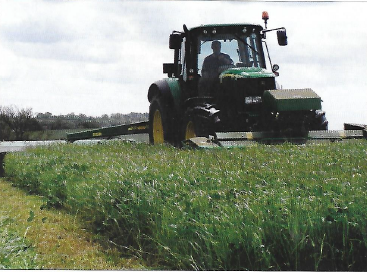Where to focus?
Faced with unprecedented increases in fertiliser, feed and energy prices coupled with difficulties in actually sourcing necessary inputs, it is inevitable that time will be spent trying to decide what to do about these issues. Dr Liz Homer from Trouw Nutrition GB believes it will be more productive to think closer to home.
“While higher prices are an area of great concern, can you actually do much about them? You can’t influence them, so they do not deserve a great deal of energy,” she suggests. “Instead it will be better to focus on those things under your control, those things you can influence.
“Ask yourself what can you do to make a difference on your farm as this is under your control? How can you improve the return on investment on all inputs by thinking value rather than price? It will be possible on most dairy farms to improve efficiencies, quite often through small changes that can help to make the most of the positive movement in milk prices.”
She suggests there are many places where an increased management focus and small changes could have significant benefits.
Manage grazing more closely
Even at today’s fertiliser prices, grazed grass remains the cheapest feed for dairy cows so the aim must be to achieve high levels of utilisation.
Manage the grass wedge effectively, to know how much grass you have ahead of the cows and what the quality is. By knowing your predicted Milk Yield From Grazing and quality you can ensure that cows are being supplemented correctly and that buffer feeds and concentrates are not restricting production from forage and increasing costs.”
Send grazing samples away for analysis regularly and fine-tuning the diet accordingly. The TNGB lab can turn samples round in 24 hours. Protein is one area where savings can be made. Grass is high in both fermentable and bypass protein, so it needs to be balanced with the optimal concentrates to support rumen function promoting buffering and avoiding acidosis.
Reduce grazing wastage. With grass a more valuable commodity this year, small changes to grazing management such as back fencing will be well worth while.
Pre-cut test silage grasses
Grass testing will help determine cutting dates for silage more precisely. Monitoring grass quantity and quality in terms of development will help make informed decisions on when to cut. Information on sugar and nitrate levels in particular can help advise on best management for optimal fermentation and therefore feed value of the silage.
Analyse clamps regularly with a representative sample
In any clamp there will be variation both through and across the clamp, yet all too often samples sent for analysis are just a handful taken from one place on the face, usually in the middle of the clamp.”
Taking samples this way can lead to a false picture of the silage being fed as it takes no account of the variation. This can lead to overestimating the feed value of the silage potentially leading to underfeeding and cows underperforming. Alternatively if the analysis underpredicts the feed value, feed costs could be increased unnecessarily.
Increase the frequency of silage sampling with a representative sample and review the diet regularly to confirm you are correct or fine tune the diet accordingly. This could maintain or improve performance or save costs by adjusting concentrate feeding.
Reduce feed waste
A substantial amount of valuable forage dry matter is wasted every year. Keeping silage faces clean, storing straights & blends in good facilities, regularly cleaning out feed troughs, calibrating the feed wagon and ensuring diets are properly mixed will all help improve how well the diet is used and the income over feed costs. Push up feed regularly and ensure cows can reach feed to maximise intakes.
Balance compounds and straights
With a volatile market, the best value will not necessarily be the cheapest. Cheapening the diet may reduce costs but will it also reduce output? It could be a false economy. Formulate the diet with ingredients to maximise rumen health and efficiency and this will give the best return.
The cows are your guide to how well the diet is performing so pay close attention to milk yield, milk quality and fertility. Losing milk and constituents will hit margins now, while any decline in fertility will affect income and margins for at least 18 months. Keep a close check on fertility KPIs.
Look at the return you are getting in terms of income over feed costs and challenge your nutritionist to help you increase this. Modern rationing systems like NutriOpt Dairy allow rations to be developed more precisely so agree your measures of success with your nutritionist.
Don’t forget mineral nutrition
Review your supplement to ensure you are not over or undersupplying key macro and trace elements. To provide best nutrition to support production, health and fertility select more bioavailable sources of supplementation.
Consider appropriate additives
Additives like buffers, yeast and supplements to promote gut health could still generate a good return on investment by looking after the rumen and the hind gut helping to reduce the consequences of heat stress this summer.
One of the first responses to heat stress is for cows to reduce their dry matter intake. Even small reductions in DMI brings about rapid remodelling of the gut, compromising gut wall integrity and causing an inflammatory response.
The glucose consumption from an inflammatory response causes 50% of the milk yield loss during heat stressed periods; compounded further by the reduction of nutrients from decreased DMI. Furthermore, with the reduction in forage intake buffering capacity drops, the rumen becomes more acidic, leading to acidosis and decreases in butterfat.
“Turning attention away from the things you can’t control and instead taking positive steps to improve the things you do, focussing on value and return on investment could help many businesses survive the current price squeeze in a stronger way,” Dr Homer concludes.
